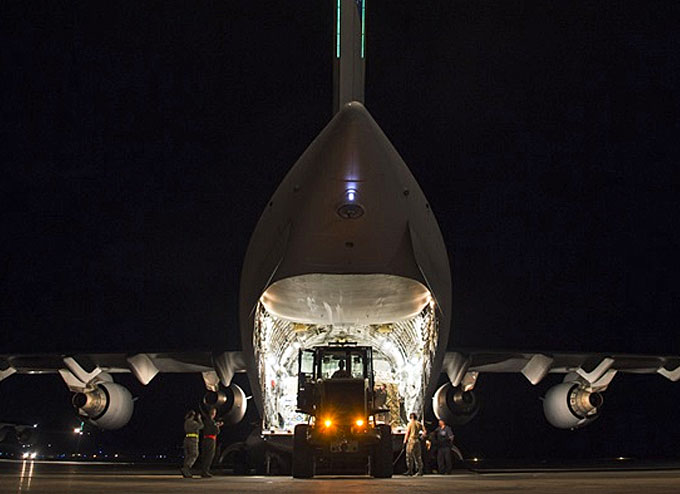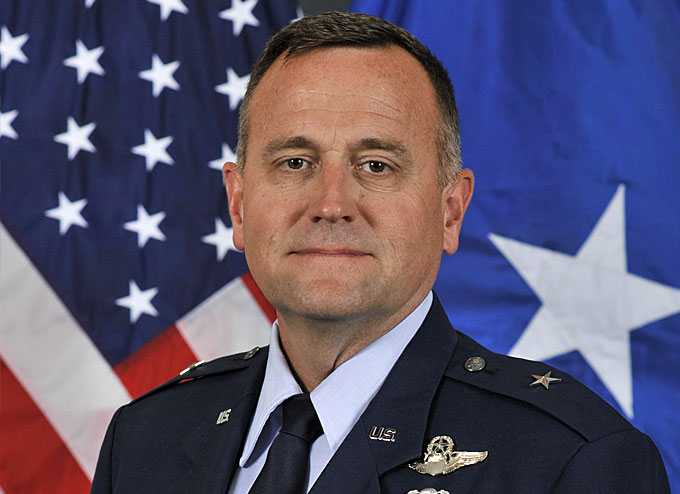
U.S. Transportation Command (USTRANSCOM) has just completed a successful proof of principle (PoP) effort that fused a leading-edge, commercial-off-the-shelf, Transportation Management System (TMS) capability with government-integrated platforms.
A TMS allows users to plan and execute the shipment of cargo of any kind more efficiently, reliably, and cost effectively.
It has the potential to substantially increase USTRANSCOM’s ability to manage its logistics enterprise by delivering enhanced air, sea, and land movement solutions, as well as real-time visibility of cargo from point-of-origin to destination.
(Gen. Darren McDew, U.S. Transportation Command commander challenges Airmen to solve problems. Courtesy of Air Mobility Command and YouTube. Posted on Nov 2, 2017)
The PoP started on Aug. 7, 2017, and during the next four months, the TMS team, along with the command’s components, worked with industry and subject experts from across the joint deployment and distribution enterprise.

Together, they identified capabilities within numerous scenarios to “stress” a TMS and also validated that the system would support the command’s transportation requirements.
Ultimately, the command’s employment of TMS smartly leverages enterprise technologies to maintain America’s competitive advantage in logistics operations.
USTRANSCOM’s TMS journey demonstrated the system:
- Brings people, processes, technology, and data together across the organizational enterprise
- Provides management and visibility of all transportation requirements and shipments in one system for optimized planning, including real-time deviation alerts and the ability to re-plan
- Delivers the capacity for cost-informed options and end-to-end shipment financial visibility for fiscal improvement and audit-readiness compliance in a single system
“The world we live in today demands we do things differently than what was done yesterday,” said Air Force General Darren W. McDew, commander, USTRANSCOM.
“The pace of technology and information, as well as the changing character of war will not wait for us to catch up.”
“TMS supports the command’s effort to evolve for tomorrow by enhancing our operational processes and supporting information technology to conduct efficient and effective multi-modal operations, while providing proven, end-to-end, best-practice transportation solutions.”

After the 2016 alternatives decision to the Joint Staff-approved program, Integrated Multi-Modal Operations, which evaluated readiness, life-cycle costs, and risks, the command subsequently identified TMS as the preferred solution from five options.
Six months later, Gen. McDew directed the formation of a TMS Joint Planning Team to rapidly conduct a 120-day PoP of TMS and government off-the-shelf systems, assessing its ability to perform global transportation-management functions.
He charged the team to strain the system, stating, “If it’s going to break, let’s break it fast.”

Following a successful system demonstration on Dec. 1, 2017, USTRANSCOM Deputy Commander, Marine Corps Lt. Gen. John Broadmeadow, subsequently directed the command to move forward in establishing a Joint Integrated Product Team to develop a TMS prototype.
“The TMS is not just an internal solution for the command, but it will redefine how we do business on a global scale,” said Air Force Brig. Gen. John C. Millard, the command’s TMS Joint Planning Team lead.
“In implementing the TMS prototype, USTRANSCOM capabilities and information resident in today’s existing systems will be leveraged to ensure success.”
 During the upcoming months, USTRANSCOM’s JIPT will partner with key strategic stakeholders, customers, and transportation partners to create and execute a detailed implementation plan.
During the upcoming months, USTRANSCOM’s JIPT will partner with key strategic stakeholders, customers, and transportation partners to create and execute a detailed implementation plan.
Since its establishment three decades ago, USTRANSCOM continues to answer the Nation’s call, whether delivering an immediate and decisive force when and where needed, assuring unrivaled global expeditionary capability, and, now with the TMS, optimizing warfighter support through immediate tracking and efficient and effective end-to-end movement of their equipment.
















